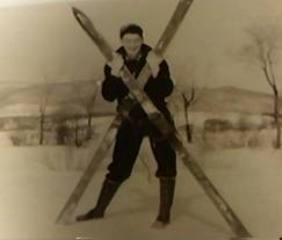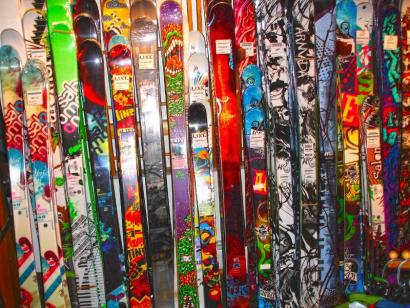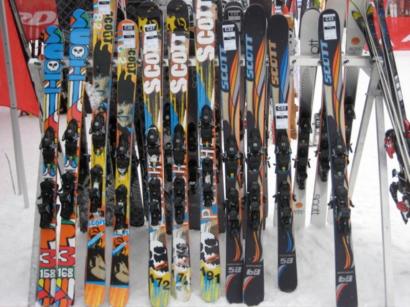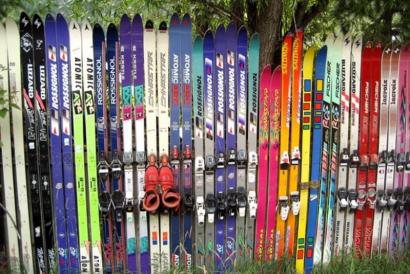The history of freeride skis
The magic boards
What the freeride skis have passed in only last 10 years, is from the ages of carving revolution another radical changein the ski industry. But this extends much further than to steep couloirs with bottomless powder and long-range drops.
The concept of freeride skis is not really all that old. First pair of skis designed specifically for freeride were made in the late 90th. It’s hard to argue today, who was the first... Freeskiing was experiencing a revolution in the U.S. in the form of efforts to equalize with the snowboarding. That’s how the evolution of the freeride skis started. First they started only a little bit to stand out of the parameters of regular downhill skis. It featured brands such as Kneissl, Dynastar, Salomon, Rossignol. Practically the only difference from the downhill skis was the width and on freestyle skis twintip (rose abutment). When the freeride ski had 85 mm under binding it was the cruelest powderski. Today this width belongs to the category of allmountain...
It was the pioneer time of freeriding, which evolved mainly in the U.S. and ski companies had to respond. They couldn’t cope with that without skiers among freeskiers, which had something to say. Seth Morrison, fo
example, was the first rider who had his own promodel. It was in K2 company in 1997.
At the beginning of the new millennium responded some smaller companies to the inflexibility of big brands - Ingeous,
DB Skis,
Line,
Capital Skis etc., which began experimenting with specialization in the freeskiing and were much more flexible in the production. That was the impuls, which the market needed. The brands started to be more audacious and to vie in offer.
So it happened that year after year new companies started to
After that, when the only parameter rose up over 100 mm it seemed that it is nowhere to proceed. But for that reacted some inovators of the riders, such as Eric Pollard (Line) or Shane McConkey, who most affected form of today’s skis for freeskiing, and who knows, what would we be riding on now if there wasn’t him... His promodel – Spatule by Volant company (2002) tangled head to many people. The ski was widest in the middle (125 mm) and had opposite deflection. It was based on water skis and on fact, that water is in consistency more similiar to powder, than hard surface.
By enriching and diffusing categories freeride and freestyle mutually logically formed concept „skis for BC freestyle (freestyle in open terrain). Thus arose the legendary Pocekt Rocket from Salomon and Seth Pistols from K2, which was followed by many others. It should be noted that the public saw these skis as a complete science - fiction, and so the ski with 10 cm under the boot long considered perfectly usable only in extreme heliskiing in Alaska. Only in the last few years, people realized that they can use for recreational freeride universal 10 cm, if the ski is well-tuned, without having to give up skiing the slopes.
Freeskiing rules nowadays the ski industry and it’s most dynamicly evolving ski sphere. Outside giants as Salomon, K2 or Rossignol there are plenty of smaller brands that specialize only in freeskiing, such as Armada, 4FRNT, Line, Zag, Movement and others. The offer is just as diverse as the whole freeskiing and it seems that the chapter freeride ski is complete and perfect. But let us be surprised!





















